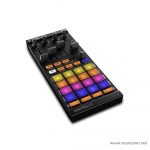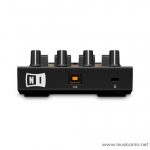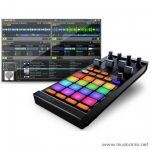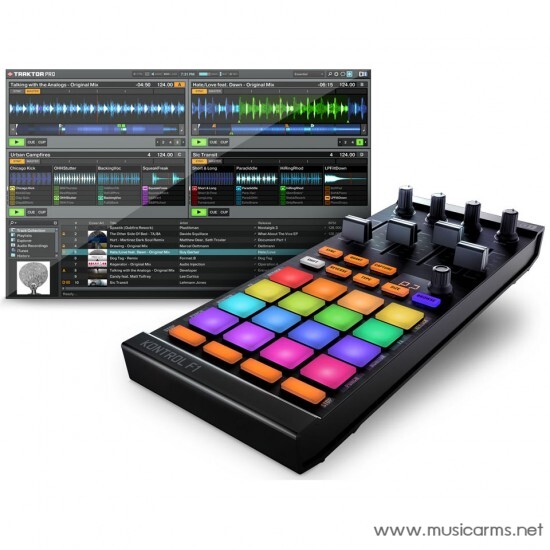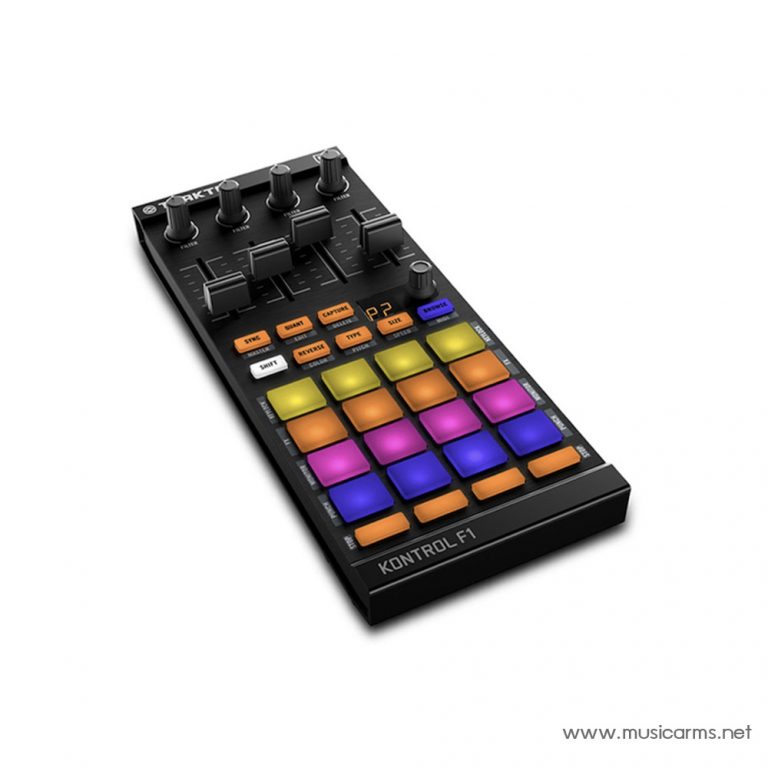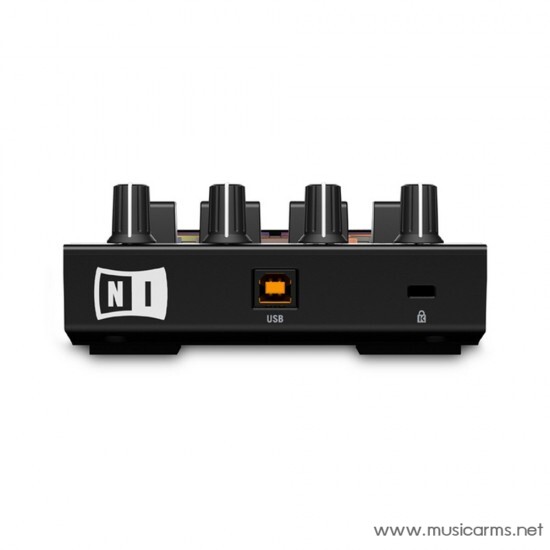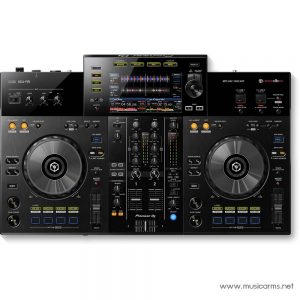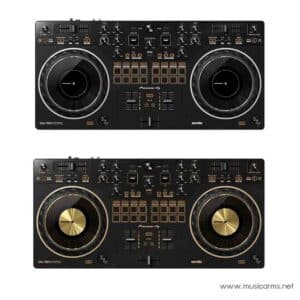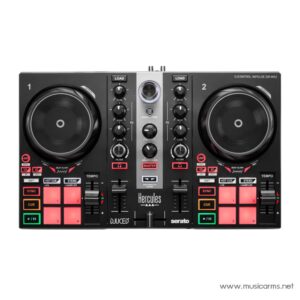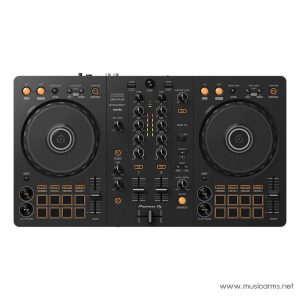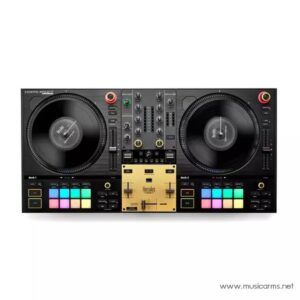NATIVE INSTRUMENTS TRAKTOR Kontrol F1

ยี่ห้อ : Native Instruments
ราคา : 8,990 บาท
8990
รุ่น : Native Instruments TRAKTOR Kontrol F1 ดีเจ คอนโทรลเลอร์ DJ Controllers
การจัดส่ง : ซื้อครบ 500 บาท จัดส่งฟรีทั่วประเทศ / จัดส่งด่วนภายในวัน ทั่วกทม. และปริมณฑล
การชำระเงิน : จ่ายหน้าร้าน 11 สาขา / โอนเงิน / เก็บปลายทาง / บัตรเครดิต /ผ่อนชำระ 0% (บางรายการ) / Shopee / Lazada
ลูกค้าองค์กร/ใบเสนอราคา
E-mail: musicarmsproject@gmail.com
ลูกค้าองค์กร/ใบเสนอราคา
E-mail: musicarmsproject@gmail.com


- วีดีโอ
วีดีโอ

- Description
- Specification
Description
THE LOWDOWN
The Traktor Kontrol F1 introduces something completely new to the world of DJing, but it won’t be something that appeals to everyone. The F1 can be used as your only controller for both the Track Decks and the Remix Decks, with a useful overlay for the former workflow, and there’s even a Midi mode for mapping to other software entirely. A whole new concept of DJing, controlling banks of samples which act like a single track for crossfading, tempo control, scratching etc. It’s well executed and there’s a learning curve, but if the idea inspires you, it’s worth investigating further.
FIRST IMPRESSIONS / SETTING UP
- Just like when the Kontrol S4 was released with the Sample Decks and Loop Recorder, the big new feature of Traktor Pro 2.5 – the Remix Decks – really make sense when combined with their intended hardware controller, the Kontrol F1.
- The hardware is a similar size and shape as the Kontrol X1 and has simply one USB socket as its sole I/O. It’s designed to sit alongside your existing set-up solely to unlock the Remix Decks (although there are an overlay and user-editable mode that turns it into a controller for “normal” or “Track” decks).
- It’s all standard NI in look, feel and construction quality. Plugged in, the red two-digit LED will feel familiar, the 16 multi-colour LED pads being bright enough (with two brightness settings) to induce an immediate “wow” factor when plugged in.
IN USE
- The first thing to note is that one Kontrol F1 controls one Remix Deck. Let’s remember how you’ll have Traktor set up: You’ll probably be DJing with two “Track Decks” and two “Remix Decks”. Each “Remix Deck” has four slots (like the sample decks of old) corresponding to the four faders and filters at the top of the F1.
- The pads, meanwhile, control the 16 individual samples in each slot. (You can scroll down through four “pages” per channel, with a deft white line that moves horizontally up or down to indicate scrolling. I liked this.)
- Now, while it is easy to switch your F1 between two (or indeed four) remix decks, it is not possible to control your Remix Decks simultaneously with one unit. A bit like controlling two deck layers with one set of transport controls, you’ll have to deftly swap layers to achieve something close to this.
- Of course, you could just buy a second F1, and I suspect that is what power users will do. If you were a total power user, and beatgridded EDM was the name of your game, a powered USB hub with two X1s and four F1s would give you transport and sample control over four remix decks for a complete sample-based performance. The mind boggles…
- More likely, though, your transport will be handled by your existing Midi controller for all your decks, Track or Remix, as befits the paradigm of the F1 unlocking the internal elements of a “Remix Deck” that is treated as a single, complete track by your main DJ controller.
- As such there are no dedicated transport controls on the F1 – but it does have individual mute/stop buttons for each of the four lines, which are right at the bottom of the unit. Having said that, the aforementioned controller or “User Map” mode is accessible by a simple two-key action and does let you control the track decks, making this mode similar to the control set you’d get on an X1.
- As this switching can be done “on the fly”, I can see the F1 appealing to minimalists or indeed to digital vinyl users, for roughly the same reason: one single slimline unit could control all of your Remix Decks as well as offer rudimentary transport controls.
Maybe NI was right to not open mapping up just yet…
- Once you dig deeper into the features, you can sympathise with NI’s assertion that the hardware/software mapping of the F1 is too intricate to open up to everyone via the mapping configuration panel quite yet. For instance, you can map individual samples to colours on the F1, and these colours are reflected in the sample slots on screen. (Having colour sets for percussion, vocal, bass and stabs, for instance, would help you to keep everything visually organised.) You can also adjust individual sample pitch (speed), key, volumes (absolute and relative), quantising, type (one-shot, loop, single play) and a handful of other characteristics.
- I guess NI decided that opening the ability to program all of this up to the masses was a step too far at launch, and even if you don’t agree, you can sympathise with such a position, especially when you consider the improvements needs in Traktor mapping in general.
CONCLUSION
- The F1 can be used as your only controller for both the Track Decks and the Remix Decks, with a useful overlay for the former workflow, and there’s even a Midi mode for mapping to other software entirely.
- Just like the X1 took on a life of its own after launch, with DJs putting it to all kinds of uses that nobody could have envisaged, I suspect the F1 will again grow into itself, with certain workflows becoming dominant and other ideas maybe ending up being non-starters. The beauty for NI is that it can now build on the platform with software and even firmware upgrades to suit how people end up using it.
- As a product bridge between between NI’s own Maschine and the world of Traktor, Traktor Pro 2.5 and the Kontrol F1 fits the bill nicely. Let’s be honest, many DJs use Maschine as a glorified sample trigger device. This is going to appeal squarely to such people.
- Taken together, Traktor Pro 2.5 with the Kontrol F1 represent a bold move for Native Instruments, shifting the company’s DJ solution into a new space. This is definitely something to be commended.
- How much DJs choose to take the whole new set of possibilities offered to them to their hearts, and where they decide to run with it, are two things that remain to be seen.
Specification

